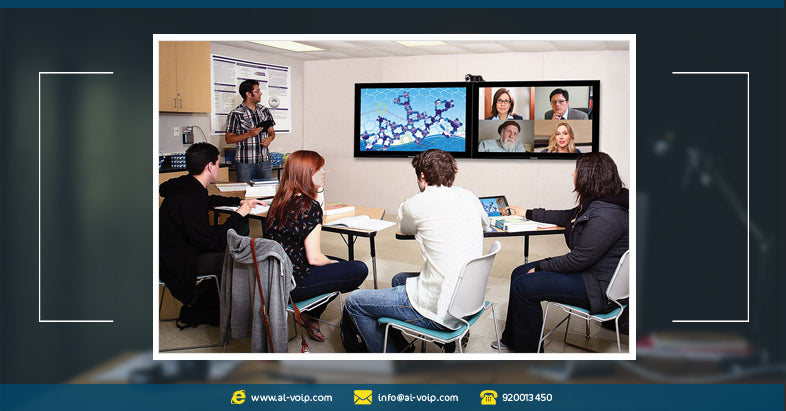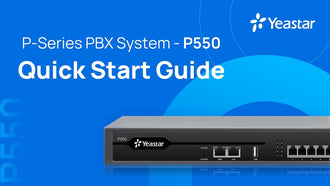

How to Choose the Right Video Conference Service?
- 17 Feb, 2019
As with any other purchase, it's important to know what you need to get out of your video conferencing service before you choose one. The last thing you want as a business owner is to spend an amount of money without obtaining the appropriate return from it. For example, a large company might need to loop in dozens of participants at once, while a smaller company might only require one-on-one conferences.
In this article, we'll determine 8 key factors you should keep in mind when choosing a video conferencing solution:
1- Number of participants
Consider how many participants are likely to sit in on these conferences regularly.
Some services allow you to connect a handful of participants for free, so if you don't need to connect a lot of people, you might not need to pay much (or anything at all).
Other services specialize in connecting a large number of users; some even allow unlimited users to join the conference.
The range is wide, so knowing what you need before you start looking can save a lot of time and help you determine how much money you should consider spending.
2- Ease of use
Don't let an unfriendly user interface be the only thing holding your business back.
It doesn't matter how many participants you're hosting if they can't figure out how to use the software. Make sure you select a video conference service that's easy to navigate.
Otherwise, you might start presentations without essential participants watching or miss an opportunity to connect altogether.
3- Types of meetings
Look for a service that can accommodate all your needs.
Some of the high-end services allow you to launch different rooms depending on the type of meeting.
Do you like to host open-forum Q&As where everybody can give feedback
Are you giving a presentation or lecture and prefer that other participants be muted?Know what kinds of meetings you'll typically host, or if you host a variety of meetings.
4- Mobile experience
The whole point of video conferencing is to be able to connect to people remotely, and sometimes, that means connecting from a mobile device.
Much like with the user interface in general, you'll want to try out a video conference service on both tablets and smartphones to make sure any participants connecting through mobile will have an equally positive experience as those connecting via desktops.
5- Video/audio recording
Sometimes, it's helpful to save the highlights of a meeting for later.
Video and audio recording capability is essential if you like to go back and replay meetings or conferences.
If your participants aren't great at taking notes, maybe an online archive of past meetings would do them some good.
With this feature, you can also save snippets of meetings for introductory or training materials for new employees.
6- Screen sharing
You can enhance meetings and presentations greatly by making them more interactive, and screen sharing is a central component of keeping participants engaged.
If you need to explain the finer points of a presentation or show a remote employee how to access certain documents, screen sharing can help you do it more quickly.
7- Application integration
Many video conference platforms allow the integration of third-party applications, such as Microsoft PowerPoint. Sharing software that you already own within a video conference system can help you import presentations and documents.
Moreover, many services have note-taking capabilities, and some allow participants to get in on the action with notes of their own.
Consider which applications you need to work within your conferencing system and how much influence you want participants to have over a meeting.
8- Customer support
Last but far from least is the quality of a company's customer service.
It's worth your while to give the customer service line a call before deciding to partner with a company so that you can get a feel for how it'll treat you.
When something goes awry, you'll want a tech support line that responds quickly and accurately, and treats you with the seriousness and respect your business deserves.
Once you've determined your needs, it's valuable to browse available free trials and play around with the systems.
Many video conference services offer free trials that last anywhere from a week to a month; some even offer free trials until a certain amount of data is used.
There's no need to go in blind when companies offer so many test runs.
Take advantage of the free trials, and make sure a service truly meets your needs and addresses your priorities satisfactorily before you buy.
What Does the Future Hold?
Video conferencing has expanded human communications much like how the telephone did more than a century and a half earlier. Emerging technologies already hold the promise of enhancing and revolutionizing video conferencing as we understand it.
Incorporating augmented reality or virtual reality into video conferencing, in particular, can make for a more immersive, impactful experience.
Imagine standing in a virtual space with your business associates, discussing operations amid a sea of interactive charts, schematics and prototypes.
AR and VR open up video conferencing to the possibility of collaborating across vast geographical distances as if the participants were physically in the same room.
That future is rapidly approaching as the technology develops; video conferencing is only going to become a more integral part of doing business in the digital age.
CHECK the video conferencing solution from Yealink that integrates with Microsoft Teams and Skype for Business from here.
Contact us for more information on:
Customer service: 920013450
WhatsApp: +966 546808213
Email: info@al-voip.com








